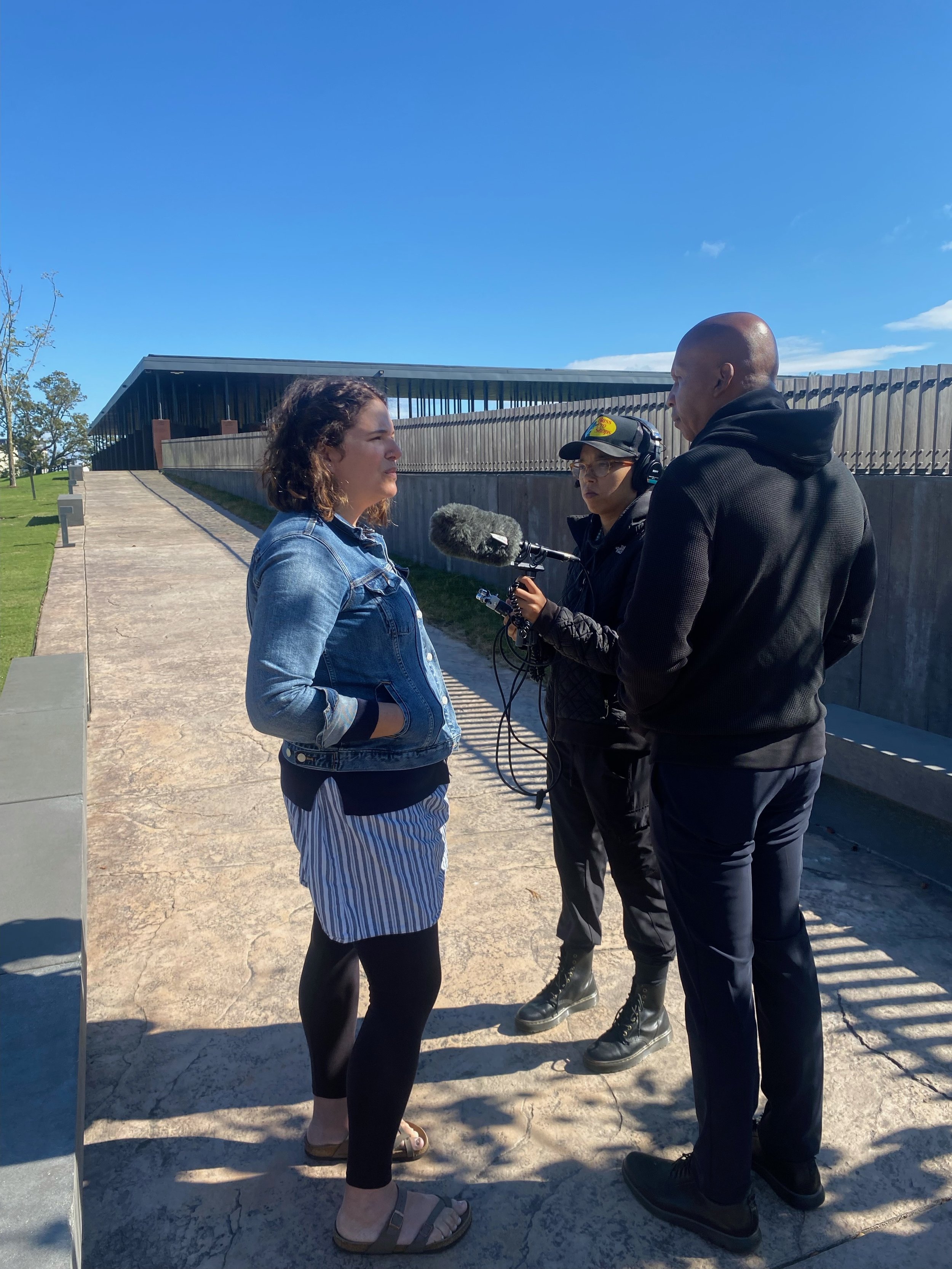Episode 66: Bringing Monuments Home (from PRX's Monumental)

“The model we provided Germany was Jim Crow segregation laws, and now we are learning from the Germans after the Holocaust how to commemorate our national crime.”
In this special episode of The Lonely Palette, I’m sharing the episode I made for the PRX limited-run podcast series Monumental, which interrogates the state of monuments across the greater U.S. and what their future says about where we are now and where we’re going.
This was the concluding episode, exploring how some monuments are larger than life, dwarfing us, making us feel small relative to the grandness of history. But what if a monument was human-scaled? What if it made us aware of our bodies in space? We don’t often think about the design choices that go into making a monument, but more and more, a new generation of artists and designers are reimagining what a monument can look and feel like, and the kinds of stories they can hold.
This episode takes us to Montgomery, Alabama to the National Memorial for Peace and Justice, to Shreveport, Louisiana, to the South Side of Chicago, to Navajo Nation in Arizona. It explores how many American monuments to slavery took inspiration from Holocaust memorials in Germany. And it looks at decentralized memorials that are using technology to help bring monuments to the past into the future.
Images Referenced:
Guests:
Bryan Stevenson, founder and executive director of the Equal Justice Initiative
Shirah Dedman, filmmaker
Professor James Young, author, The Texture of Memory: Holocaust Memorials and Memory
Branly Cadet, sculptor
Clint Smith, author, How the Word is Passed, staff writer at The Atlantic
Peter Cole and Franklin Cosey-Gay, co-founders, The Chicago Race Riot of 1919 Commemoration Project
Idris Brewster, executive director, Kinfolk
Kassie John, designer and illustrator, creator, Walking with Dinétah
Jha D Amazi, principal architect, MASS Design Group
External links:
The National Memorial for Peace and Justice, Montgomery, AL
The Legacy Museum, Montgomery, AL
“Monuments to the Unthinkable” by Clint Smith (The Atlantic, December 2022)
MASS Design Group’s The Gun Violence Memorial Project
























